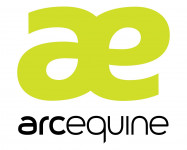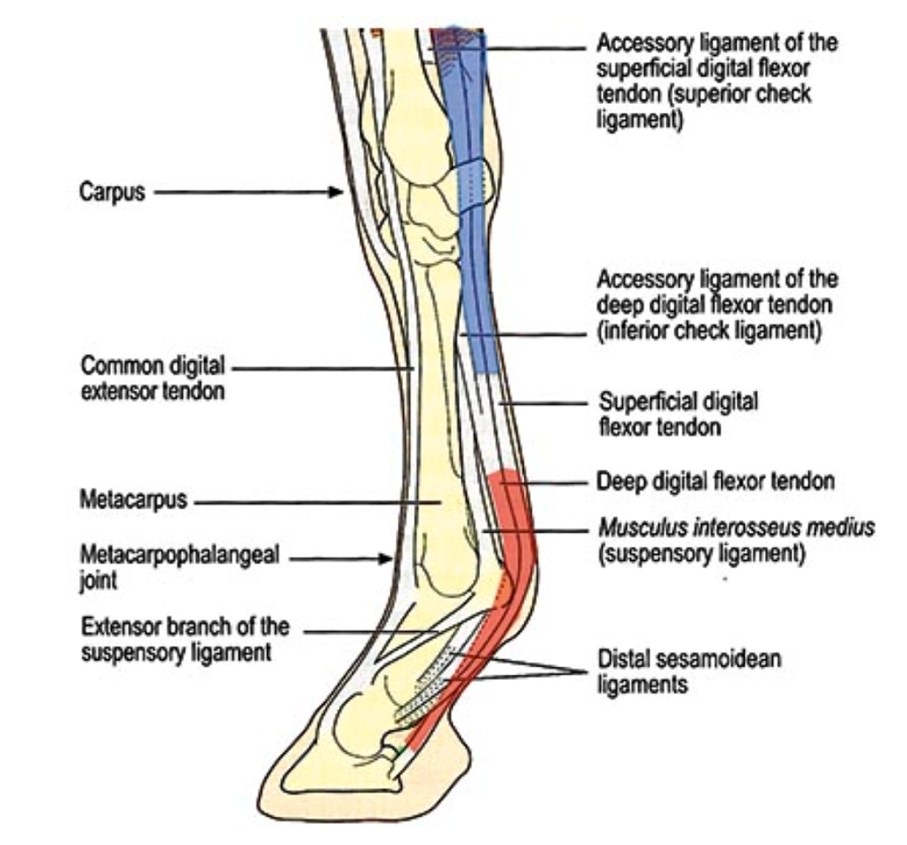Posted: 4th March 2019 | Back to news feed

The World of Eventing
At ArcEquine, we fully understand the close bond between rider and horse and have spent 10 years helping equine athletes recover from injury and manage their pain. Eventing is a high impact discipline for both human and equine athletes. Over time, repetitive movements such as jumping obstacles or making tight turns across undulating terrain can have a negative impact on your horse’s body which can provoke gradually worsening conditions or cause sudden injuries to occur.

Deep Digital Flexor Tendon Tears
In eventing, there are a few injuries that the ArcEquine team repeatedly see cropping up, but a serious repeat offender is the notorious deep digital flexor tendon (DDFT) tear. The DDFT is a very long flexor tendon. The primary role of this tendon, which is located at the back of the legs, is to serve as a supportive and positional role for the foot. In a fully-grown horse, the DDFT is often in excess of 50cm in length and is attached to muscle above the carpus (knee) in the forelimb and the hock in the hindlimb. (See below).
In eventing, the repetitive stress of jumping at high speeds puts a large amount of pressure on the tendon due to the DDFT being overstretched as the horse pushes off both at the gallop and after landing a jump. Over time, these repeated motions can also cause the tendon to become chronically inflamed and thickened, a condition known as tendinitis.

Image courtesy of Horse and Hound
Signs of Damage
A classic symptom of the DDFT being damaged or completely severed is when the toe comes up off the ground when the horse puts pressure on the limb. Degrees of lameness will vary greatly, but common symptoms will include swelling, sensitivity and heat.1 Please be aware that even if none of these signs are present, your horse’s DDFT may still be damaged.
Microcurrent Technology
The ArcEquine is a pioneering microcurrent therapy device. Microcurrent therapy has appeared in many peer reviewed studies and has been found to have a categorically positive effect on tissue repair and recovery in a wide range of clinical populations.2
Scientific research into microcurrent technology has found that it radically increases the production of adenosine triphosphate (ATP). This is the energy providing molecule that is required for all metabolic cellular processes which are fundamental for facilitating pain management and tissue repair. The ArcEquine fascillitates the production of ATP, allowing healing to start sooner with less scarring.2
Even vets that started out as microcurrent sceptics are being won over every day, but it’s the early adopters that are leading the charge to use microcurrent therapy as another tool in their arsenal in the fight against pain, improved recoveries and preventative maintenance.
"We started using Arc Equine 2 years ago as part of our tendon management protocols. Since then I have seen many cases with better than expected quality and speed of healing. Maybe even more important, in combination with active rehabilitation, there is significantly less scar development as well. I see Arc Equine as a very welcome technology in the management of our equine athletes."
Henk Offereins, DVM, MVSc, MRCVS
Veterinary Director Equinetendon.com
Choosing the right treatment is crucial as DDFT injuries have a high failure rate with a positive prognosis of 30-50%. The injuries are usually followed by long periods of rest and rehabilitation of up to a year. It is important to weigh up the options. Careful planning can improve the chances of your horse competing again.3
A memorable DDFT case study from ArcEquine involved a horse named Gromit who was diagnosed with a tear in his deep digital flexor tendon the size of a 50p piece. The tear was on the side of his tendon, so it did not have borders, which meant he was not a candidate for Platelet Rich Plasma (PRP) therapy and he would never make a full recovery. The vet recommended surgery follow by 8 weeks box rest. However, after using the ArcEquine for 12 weeks, Gromit’s tendon hole was 100% healed without box rest, Phenylbutazone (bute) or surgery. Needless to say, the vet was extremely impressed.
Using the ArcEquine
The ArcEquine is no one-trick-pony though and comes with 4 pre-programmed treatment protocols, the first 3 programmes are geared toward improving recovery from injury and reducing the associated pain while the 4th is a maintenance programme that will support the preservation of optimal physical health.4
With its ‘one touch’ operation, the ArcEquine is easy to use with no specialist training or clinical knowledge required. Any owner, rider or groom can provide their horse with cutting-edge microcurrent therapy, with exactly the same product used by professional riders, trainers, therapists and vets.
Improve recovery from Injury and Maintain Peak Performance with the ArcEquine Device.
For more information on the ArcEquine, click here.
Darius Wood, B.A
University of Bristol
The Arc-Family
References
1 Ross M W & Dyson S J (2011) The Deep Digital Flexor Tendon. In:Diagnosis and Management of Lameness in the Horse. Elsevier, Missouri. pp 726-733.
2 Watson T. Electrical Stimulation for Enhanced Wound Healing. In: Watson T, editor. Electrotherapy: Evidence-Based Practice. Edinburgh: Churchill Livingstone / Elsevier; 2008. p. 329-46.
3 Horse & Hound; 5 May 2016
4 Poltawski L, Watson T. Bioelectricity and microcurrent therapyfor tissue healing: A narrative review [Bioelektrycznos ?c ?i gojeniesie tkanek pod wpywem terapii mikropradami - Przegladnarracyjny]. Rehab Med 2010;14(3):42–52.
The Equestrian Index newsfeed is compiled from articles submitted by advertising members and expresses the opinions of those members. Watsons Directories Ltd shall not be held liable for any inaccuracies or mis-statements therein.